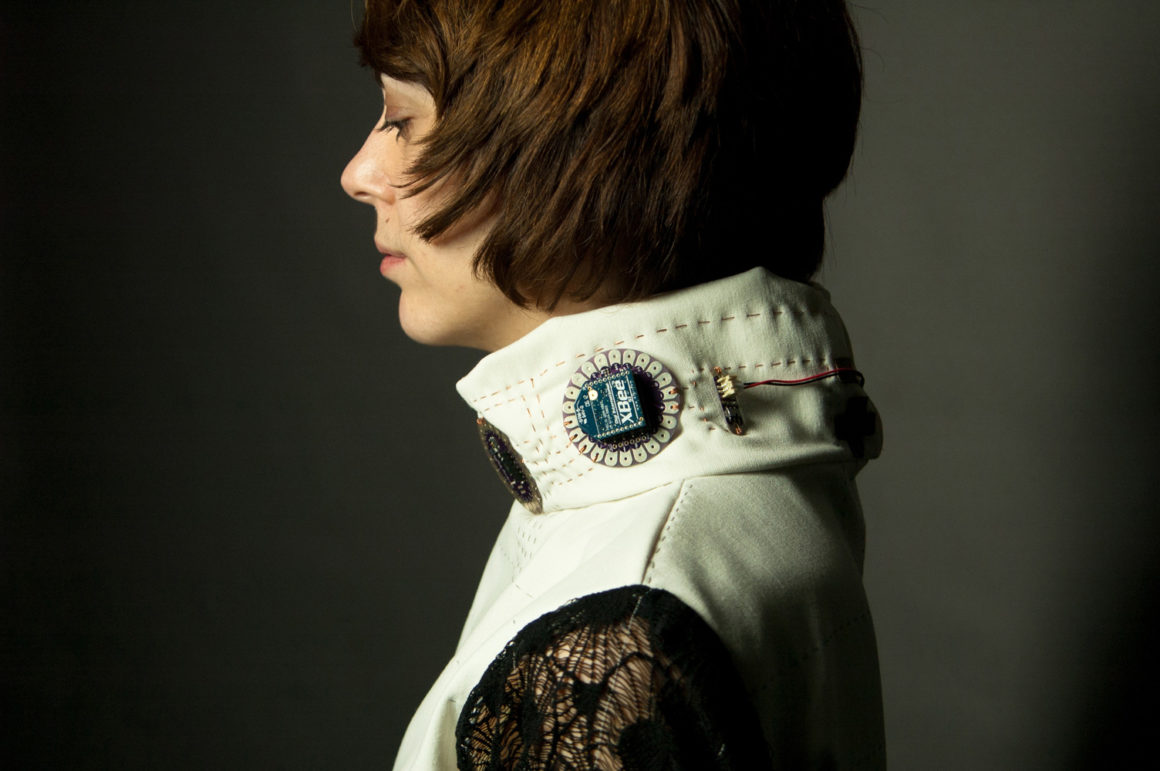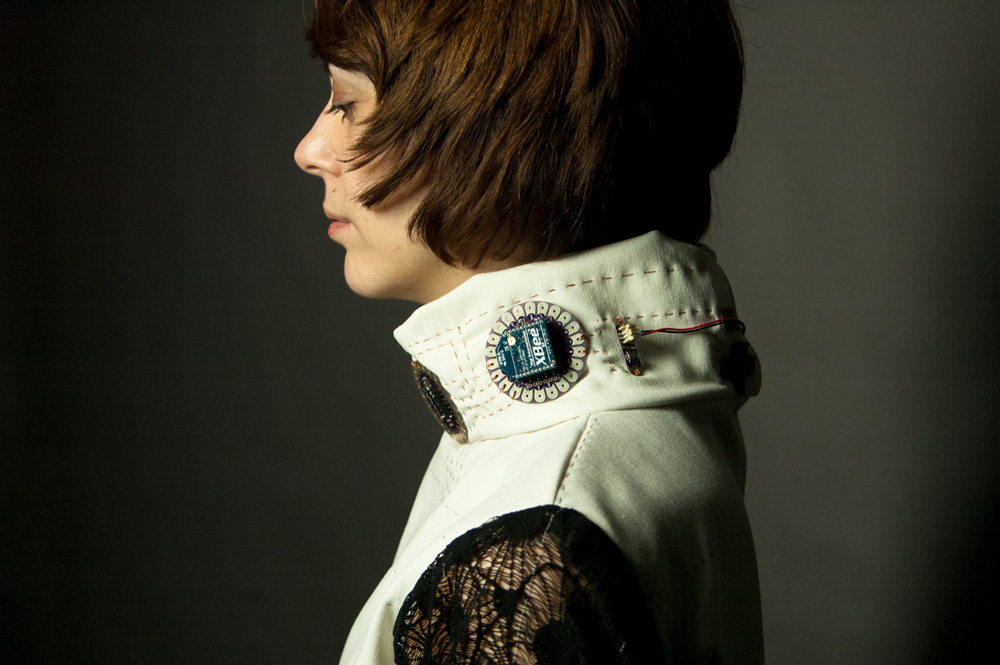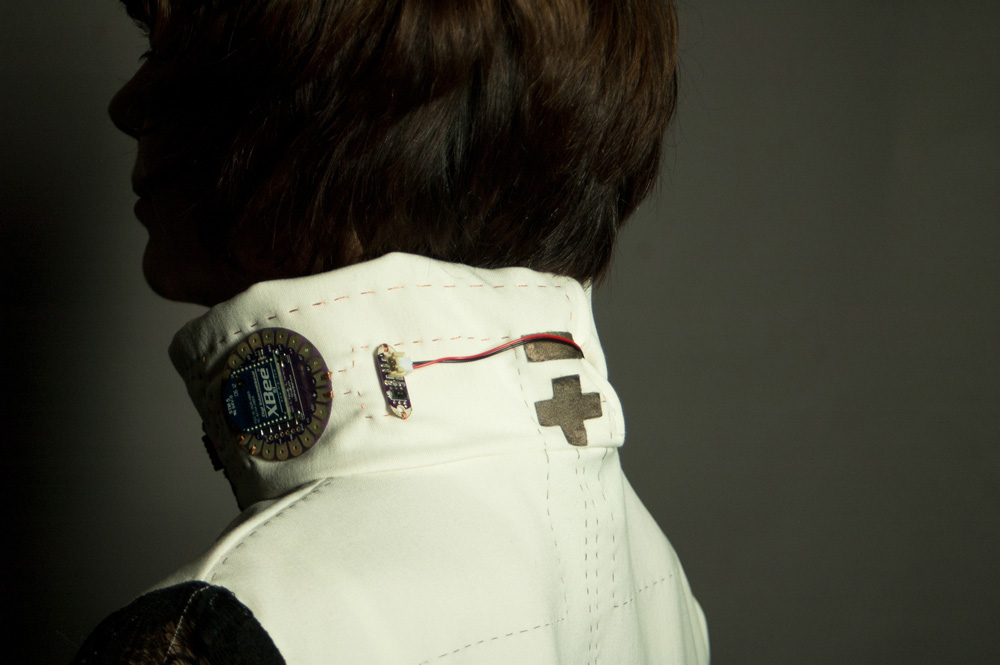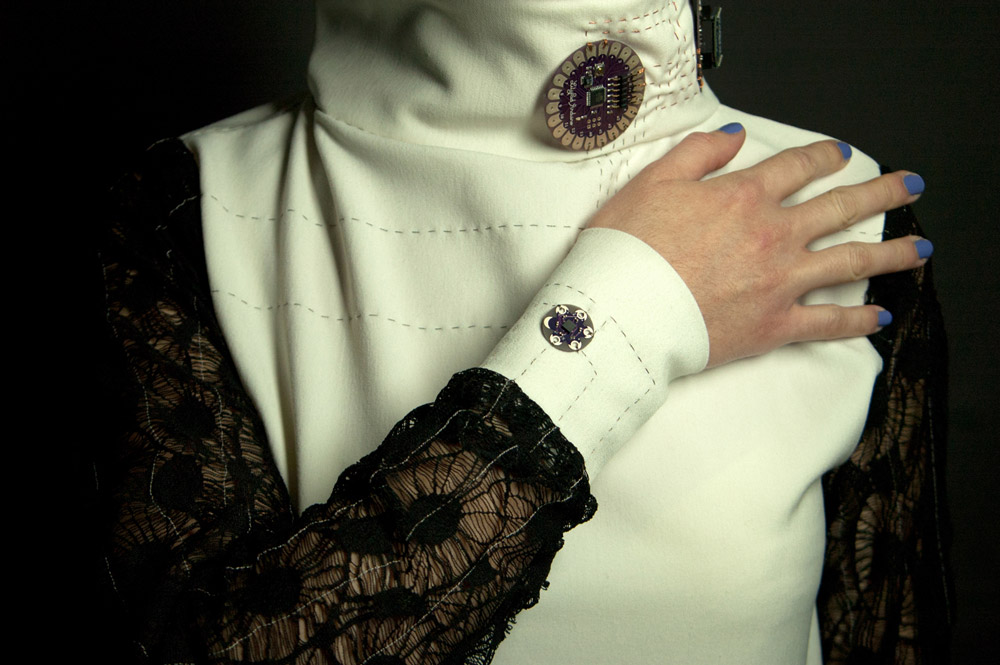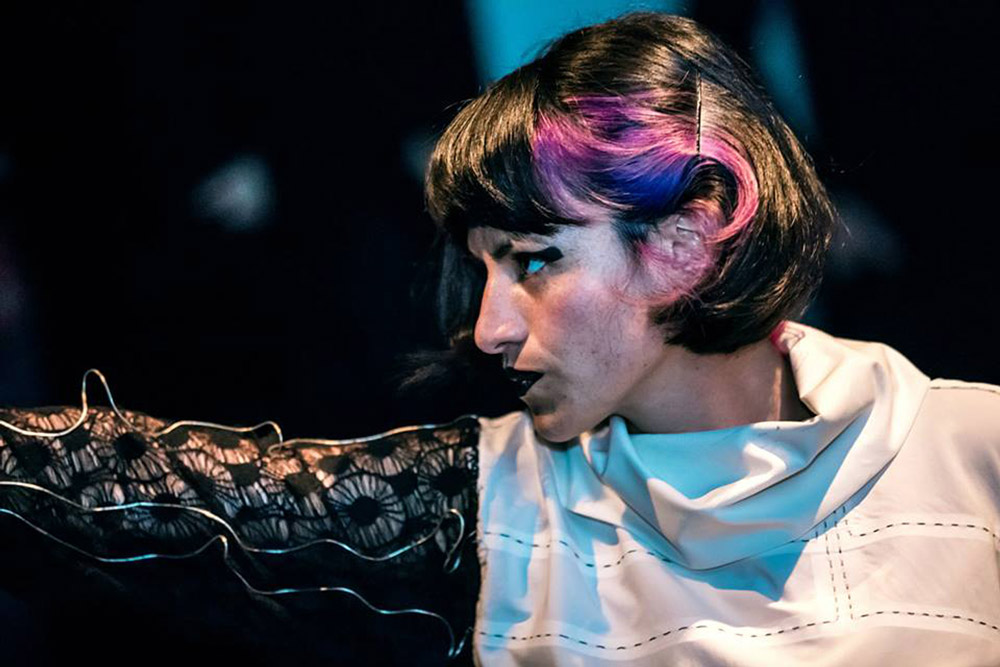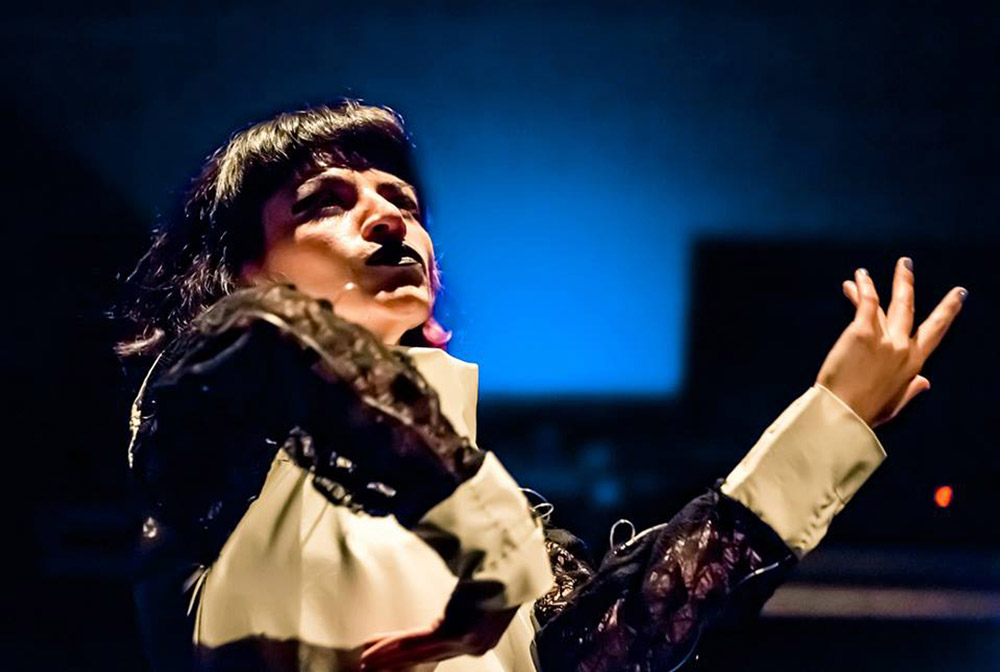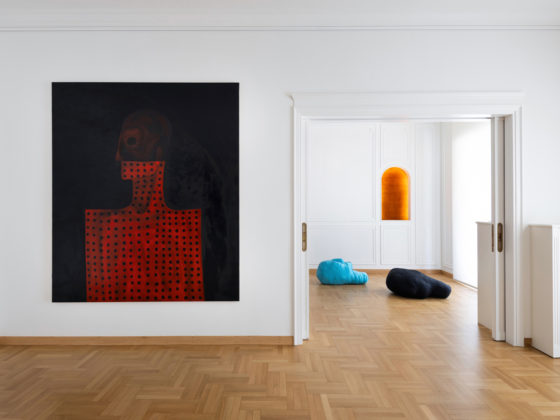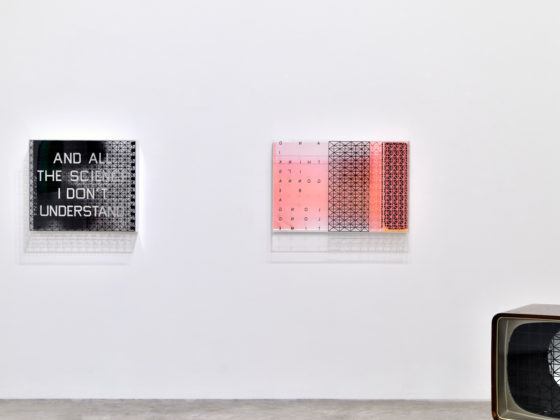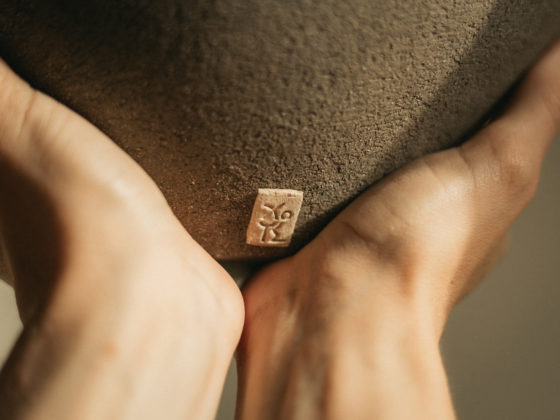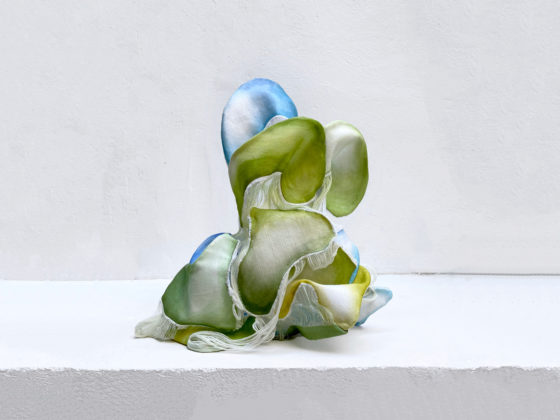Idoru() is an interactive sound performance that explores wearable technology and the body as an interface to control sound. The project wishes to address issues of body augmentation through the use of electronic textiles, by creating an enhanced hyper-body that generates useful data that can, in turn, be translated into frequencies and thus, generate an interactive soundscape.
The system model is a hybrid between the biological body and its technological augmentations that allows the performer to extend its biological capabilities, though the use of subtle technologies, without being pervasive to the body itself.
Conceptually, the project is influenced by cyberpunk literature as described by William Gibson and the japanese AI performer Rei Toei in his 1996 novel “Idoru”. Idoru is a female virtual entity that manifests herself only through her performances, creating this way a unique and personalized experience for her audience.
Likewise, the Idoru performance is about creating an artificial entity, that comes to life through sound, body and space exploration, with the intention to create an immersive environment for herself and the public. Sonically, the project is influenced by early electronic music experimentation and the sci-fi aesthetics of Delia Derbyshire and Louis and Bebe Barron.
Through the use of a LilyPad Arduino microprocessor and an XBee wireless antena, the garment worn by the performer is connected to sound generators, sine and noise oscillators reactive to the performers gestures, controlled by accelerometers that are located in the wrists of the garment.
The design references a retro-futuristic aesthetic, influenced by cult films like THX 1138. It is characterized by its minimal and sophisticated lines, referencing science fiction films uniforms and Star Wars Princess Leia’s high neckline white dress, with the addition of a contemporary twist, incorporating black lace in the sleeves.
